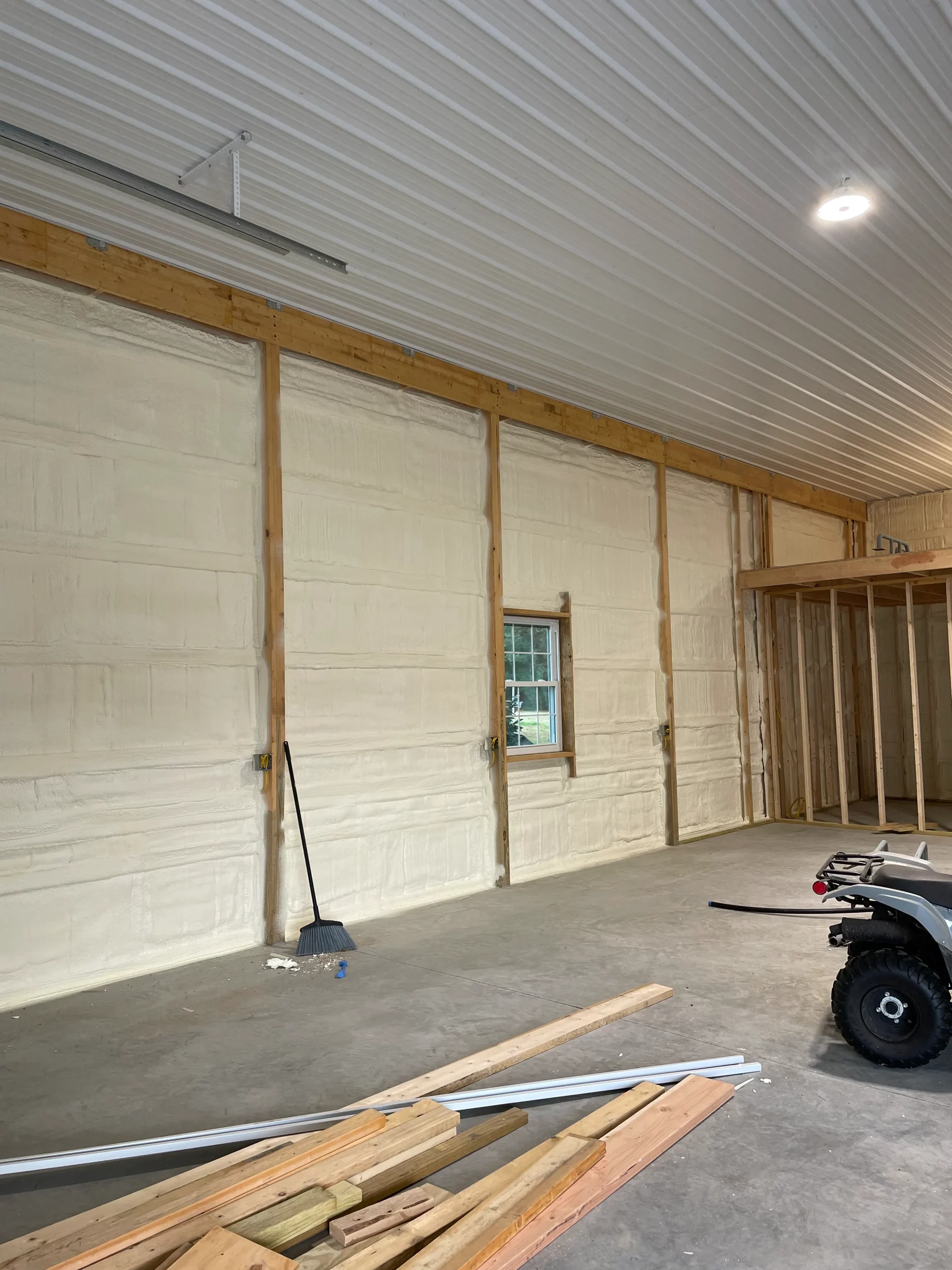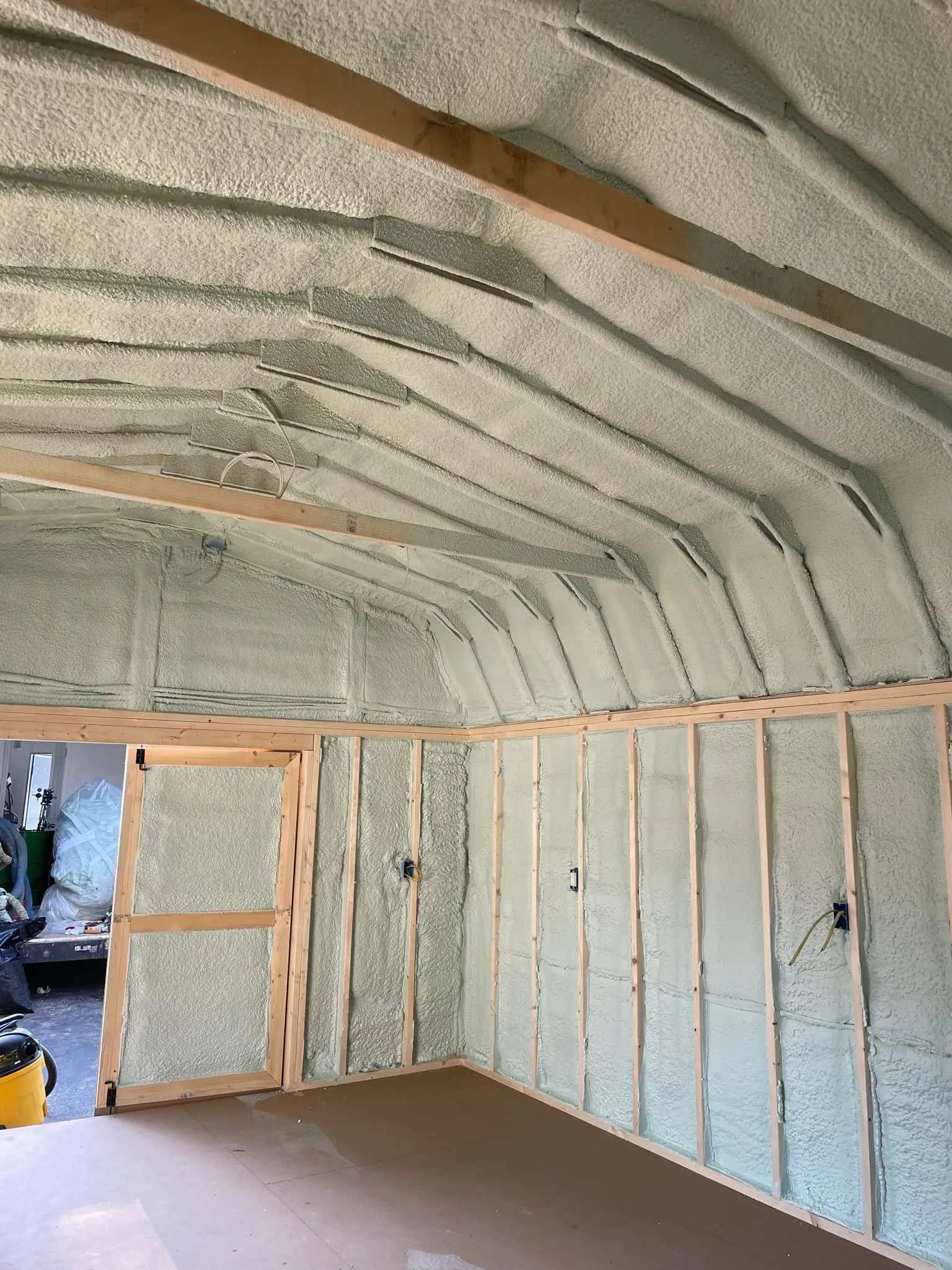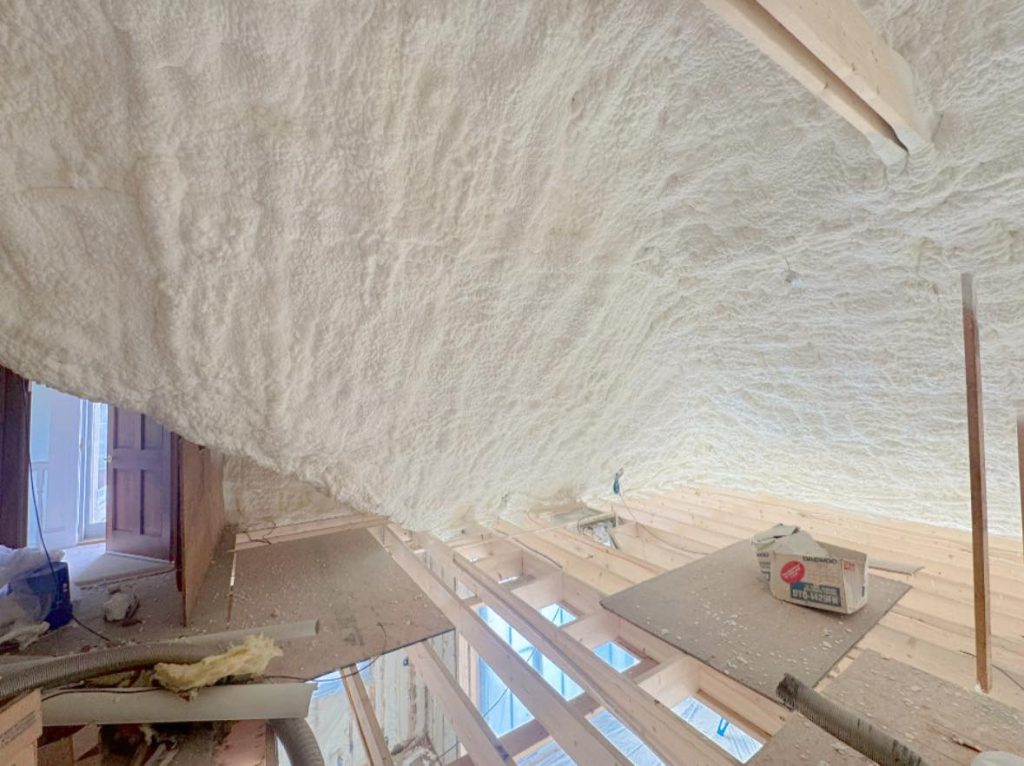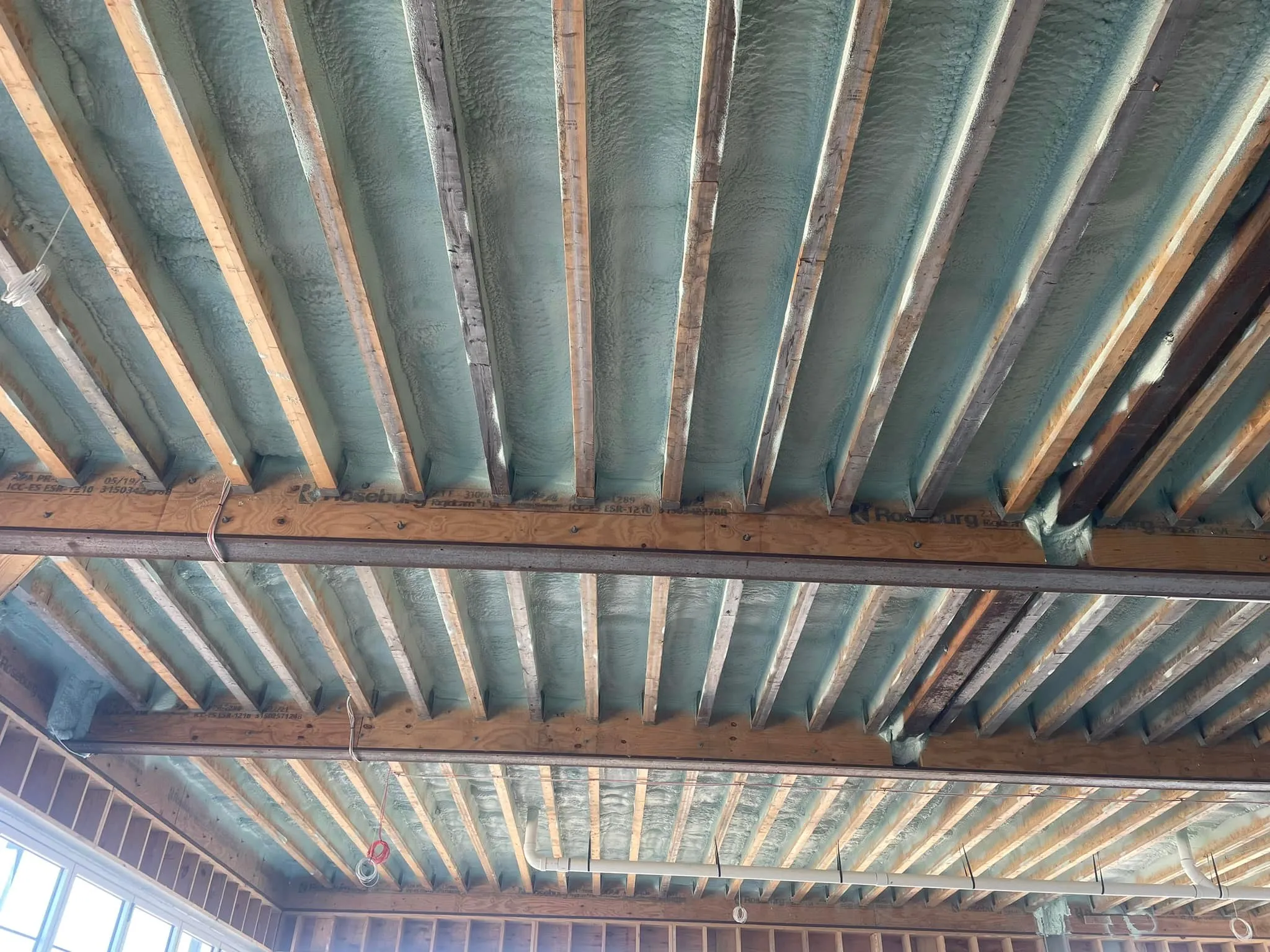

Yes, the right insulation system can significantly reduce the number of outdoor allergens entering your Annapolis home. The key is to pair insulation with thorough air sealing. Most allergens, like pollen, dust, and mold spores, don’t pass through solid building materials; they ride on air currents that infiltrate your home through countless tiny cracks, gaps, and openings. A complete insulation and air sealing strategy creates a continuous barrier that effectively blocks these airborne intruders.
This works by controlling the flow of air between the outdoors and your living space. By sealing the hidden air leaks in your attic, crawl space, and foundation, you stop the pathway that allergens use to get inside. This article explains how allergens enter a home, which types of insulation are most effective at stopping them, and what Annapolis homeowners should consider before upgrading their home’s thermal barrier. Peninsula Insulation, LLC’s experience comes from years of addressing the specific challenges posed by Maryland’s climate, from humid summers that encourage mold growth to high spring pollen counts.
Homes breathe. Due to a principle called the “stack effect,” warmer air rises and escapes through the upper levels of a house, creating a vacuum that pulls in new air from the lower levels. This replacement air brings with it whatever is floating around outside, including common local allergens.
In the Annapolis area, this means dealing with specific seasonal threats. Spring brings high concentrations of tree pollen from oak, pine, and birch trees. According to information from the Asthma and Allergy Foundation of America, fall is dominated by ragweed pollen, while the humid summers create ideal conditions for mold and dust mites to thrive. These particles easily enter through unsealed gaps in several key areas:
Without proper air sealing, your home’s HVAC system can even make the problem worse by pulling in outside air and circulating allergens throughout every room.
It’s helpful to understand that insulation and air sealing perform two different but related jobs. Insulation resists the transfer of heat, which is measured by its R-value. Air sealing stops the movement of air. To block allergens, you need both. Some insulation materials are better at this than others.
For example, traditional fiberglass batts are good at resisting heat transfer, but they don’t stop airflow. Air can move freely through and around them, carrying dust and pollen along with it. Materials like closed-cell spray foam, on the other hand, act as both an insulator and an air barrier in one application. It expands to fill every crack and crevice, creating a durable, airtight, and waterproof seal.
| Insulation Type | Air Sealing Ability | R-Value (per inch) | Moisture Resistance | Notes |
|---|---|---|---|---|
| Closed-Cell Spray Foam | Excellent | 6.0 – 7.0 | High | Creates a rigid air and vapor barrier, ideal for preventing mold. |
| Open-Cell Spray Foam | Good | 3.5 – 3.8 | Low | Excellent air barrier but requires a separate vapor barrier in certain applications. |
| Blown-In Cellulose | Fair | 3.2 – 3.8 | Moderate | Can be densely packed to reduce some airflow but is not a true air barrier. |
| Fiberglass Batts | Poor | 3.1 – 4.3 | Low | Does not stop air movement and can hold moisture if exposed to leaks. |
Bonus Tip: A simple way to check for air leaks is to hold a lit incense stick near window frames, electrical outlets, and baseboards on a windy day. If the smoke wavers or is drawn inward, you have an air leak that’s also an entry point for allergens.

To get the best results, focus on the areas that separate your home’s living space from the outdoors or unconditioned areas like the attic and crawl space.
Insulating and air sealing the attic floor is one of the most effective ways to improve indoor air quality. This stops allergens from being pulled in through the roof and soffit vents and making their way down into your home. It also prevents hot, humid attic air from mixing with your conditioned air, which can reduce the strain on your AC system.
Annapolis’s proximity to the water means high humidity, a major concern for basements and crawl spaces. Unsealed, damp crawl spaces are breeding grounds for mold and mildew. A study from the U.S. Environmental Protection Agency highlights that controlling moisture is the key to controlling mold. Insulating the crawl space walls with a moisture-resistant material like closed-cell spray foam and installing a vapor barrier over the ground can isolate this problem area from the rest of your home, preventing musty smells and mold spores from rising into your living areas.
Before you invest in new insulation, it’s a good idea to think about a few factors to ensure you get the right solution for your specific home.
Proper insulation and air sealing form a foundational defense against outdoor allergens. By creating a complete thermal and air barrier, you can control your indoor environment and reduce your exposure to the pollen, dust, and mold spores that are so common in the Annapolis area. Before starting a project, evaluate your home’s specific needs, consider your long-term health and comfort goals, and remember that controlling airflow is just as important as resisting heat.
To understand the unique vulnerabilities of your home, a professional evaluation is the best starting point. The team at Peninsula Insulation, LLC can help identify air leakage points and recommend an effective strategy tailored to your property. For a detailed consultation, you can get in touch by calling (410) 770-2624 or sending an email to wil@mdsprayfoam.net.
Most modern insulation materials are not considered common allergens. However, fiberglass can release small particles into the air during installation that may irritate the respiratory system. Once it’s installed and sealed behind drywall, it’s generally not an issue. Materials like spray foam and cellulose are typically considered hypoallergenic once cured.
It’s a very significant step, but it works best as part of a whole-home strategy. An airtight, well-insulated home combined with a high-quality HVAC filter, regular cleaning, and keeping windows closed during high pollen seasons will provide the most comprehensive relief. When planning an insulation project, also ask about sealing ductwork. Leaky ducts in an attic or crawl space can pull in dusty, allergen-filled air and distribute it directly into your home.
Spray foam expands to fill gaps and cracks, creating an airtight seal that physically blocks airborne allergens. It also has a rigid structure that doesn’t allow air to pass through it. Fiberglass batts, in contrast, are porous and often have gaps around them, which lets air and the allergens it carries flow through relatively easily.
High humidity creates a welcoming environment for two major indoor allergens: mold and dust mites. Mold needs moisture to grow, and dust mites thrive in humid conditions. By using moisture-resistant insulation like closed-cell spray foam in basements and crawl spaces, you can help keep these areas dry and make your home less hospitable to these allergens.
You can, but only if the existing insulation is in good condition and you air seal first. Simply piling new insulation on top of old, leaky insulation won’t stop the airflow that carries allergens. It’s often more effective to remove the old material, properly air seal the area, and then install new insulation.
A properly air-sealed home doesn’t feel stuffy; it feels comfortable and draft-free. The goal isn’t to make your home a sealed box but to control how and where it gets fresh air. In very tight homes, a mechanical ventilation system ensures a constant supply of fresh, filtered air, which is much healthier than the uncontrolled, unfiltered air that comes from random leaks.


